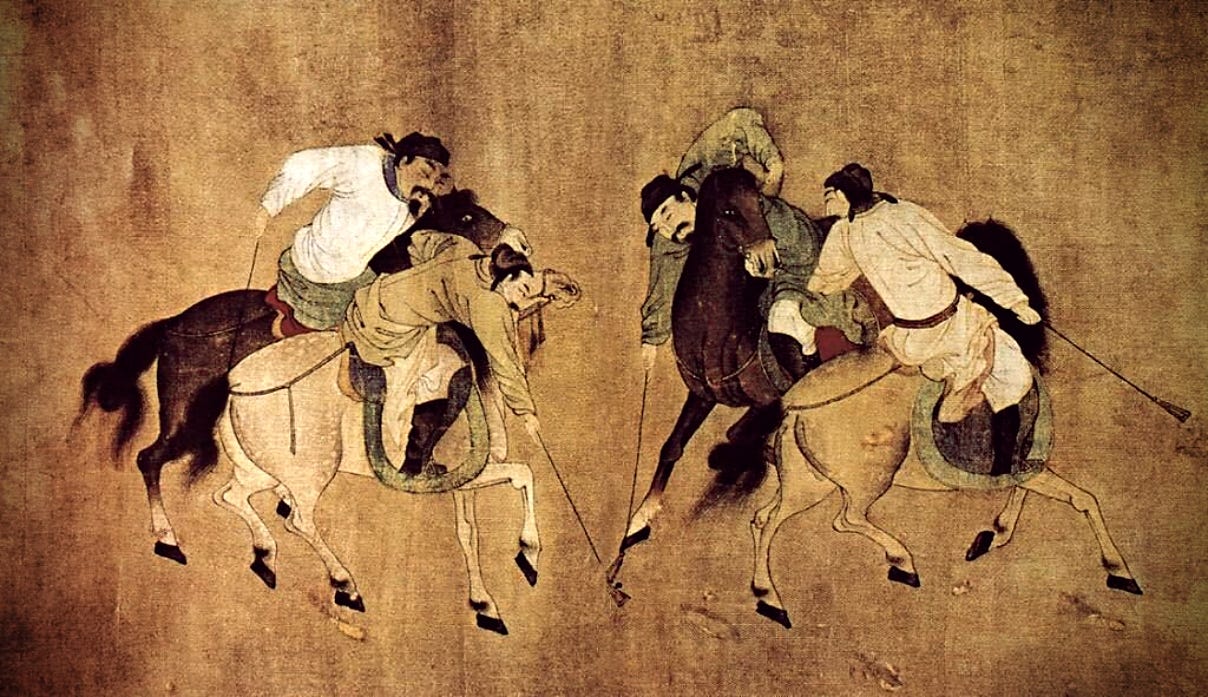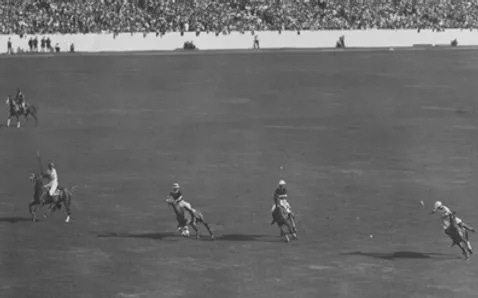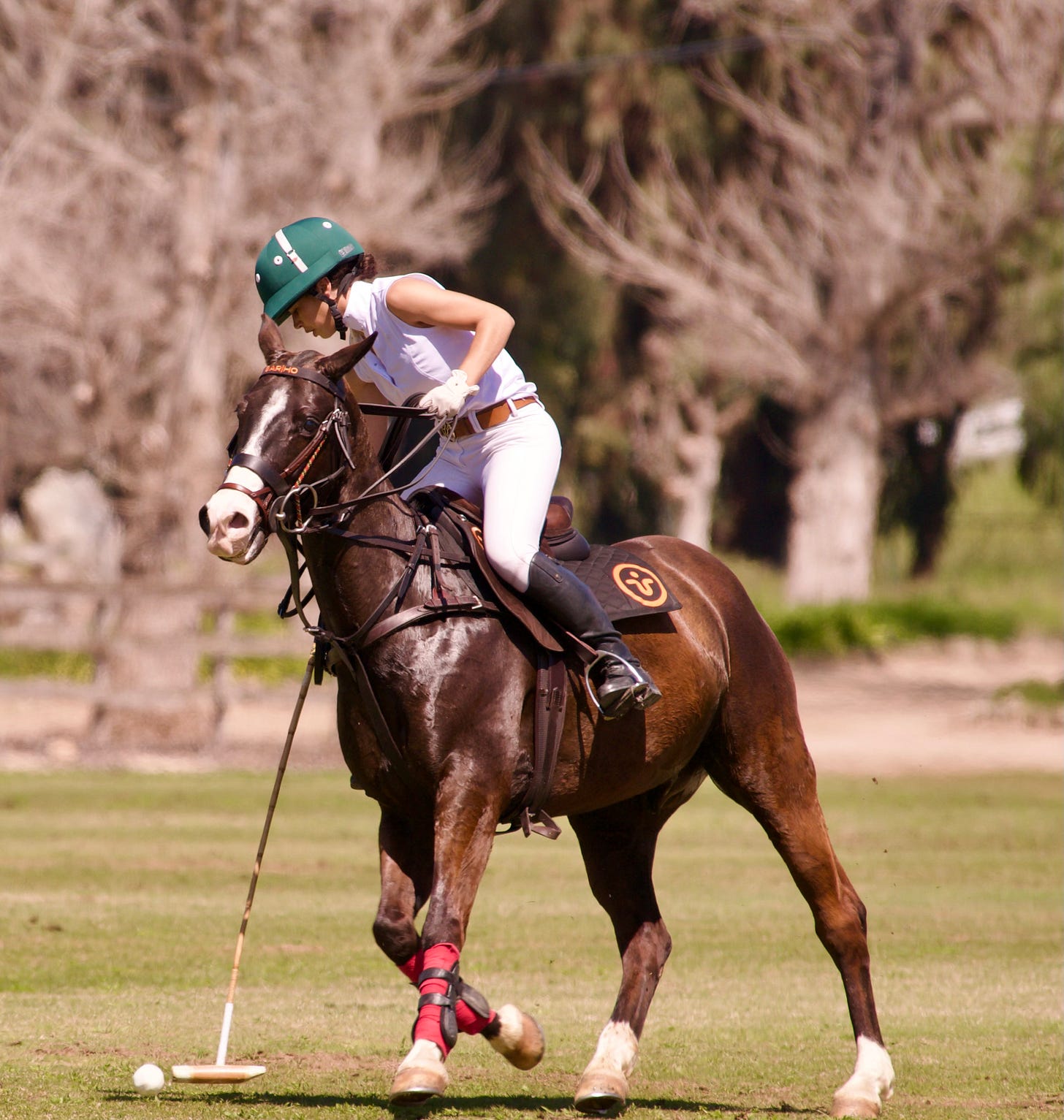8 October 2023, San Diego, California, USA
Polo is a bit of an enigma.
It is a sport almost everyone in the world knows exists, but most people have never played or spectated, live or digitally. An ancient sport, truly, historians have cited polo as dating back to Persia, or modern day Iran, between 600 BCE - 100 ACE, turned into a global lifestyle. Today polo seems to be an aesthetic of quiet American luxury driven by the one and only Uncle Ralph. Yes, I’m referring to Ralph Lauren, global American powerhouse putting billions of people in the polo uniform - a cotton collared short sleeved shirt, in any color, with a polo player emblem on the chest.

We who wear the polo shirt, Ralph Lauren, Lacoste, USPA, Rowing Blazers, uniform or otherwise, are not saying to the world, ‘Goodday, I am a 10 goal polo player,’ rather they are covertly underlining the fact they know and appreciate the finer things in life, the universe’s simple luxuries, one of which is freedom from slaving over your appearance.
Now, it is important to note that the polo shirt as we know and love it today, was created and dubbed for the sport and the polo players that wore it in India in the 1850s and later in England in the 1920s.
Given how ancient, re-read our first paragraph above, the sport of polo is, the uniform of polo players has evolved over the thousands of years the sport has been played. Originally polo players wore long sleeve, heavier shirts with collars during play. As you are riding a horse at full speed, about 40 mph, ramming into your opponents, wearing a helmet, boots, gloves and carrying a 52 inch mallet, dirt and grass flying into your face, you might imagine a long sleeve, wool rugby-esque shirt is not what you want to be wearing.
Fast fact: In 1896, John Brooks, early President of Brooks Brothers noticed that polo player’s collars would flap up and down as they galloped up and down the pitch during matches. In a moment of genius he decided to produce a long sleeve oxford cloth polo shirt with button down collar points - they still produce this style shirt today, as does almost every other men’s, and women’s shirt maker.
From the long sleeve heavy polo upper, and out of necessity, polo clothing evolved to the polo shirt as we know it today. The polo’s design considers the polo player at each turn: they are typically made of cotton or a breathable fabric such as silk or wool (as duh it is quite a strenuous sport), the sleeves are made short for further breathability.
How often do you wear a polo shirt? How many do you own? Where do you wear them? Sporting, perhaps in your youth to school, over a pair of jeans to look easily put together? Like so many equestrian sports, polo has seeped into human lives and closets.
The sport of polo is unique for two reasons:
1. It has long and rich history
2. The fact that it is a team equestrian sport
Dating back to 600 BCE and the Persian empire, polo is said to be the oldest team sport in the world. The sport was played by the noble classes, first Persian kings, princes and queens took up the sport and its name is thought to have evolved from the Tibetan word, “pholo” meaning “ball” or “ballgame”.
During the Middle Ages, the sport continued in popularity and started to be used in military training exercises, for the cavalry. Over the centuries the sport spread as civilizations evolved, were conquered and did the conquering: the Middle East, Asia, Africa. India was bit by the polo bug by Muslim conquerors in the 1200s and later British tea planters encountered the sport while working in Manipur in Northeast India (Hello, TwoWeeksofTea) and in 1869 England recorded its first polo tournament on Hounslow Heath - the players consisted of military officers, one of which had read about the game in a magazine.

A handful of years later in 1876, James Gordon Bennett, a Scottish American newspaper publisher who founded the New York Herald, had watched a polo match and introduced it to his wealthy and connected peers in the United States. That same year informal polo matches began to be played in New York City and by 1878 the Westchester Polo Club1 was founded, followed by the Meadowbrook Club in 1881.



Fast fact: Meadowbrook Polo Club remains the oldest operating polo club in the USA, and today there are about 230 official polo clubs operating across the United States. I play at Bonsall Polo Club.
As polo’s popularity grew around the world, rules and regulations were required and in 1888 American players adopted the rules used at Hurlingham Polo Club in England, until in 1890 the United States Polo Association was born and took charge of the sport as its governing body and sculpted the game as we know it today.
Fast fact: Today the United States Polo Association or USPA remains the sport’s governing body and the nucleus of American polo based in Florida. The USPA is a polo player’s bible for rules, handicaps and safety regulations.
Polo today is played indoor, in an arena, or more recognizably outdoor on a grass field 300 yards long and 160 yards wide. At either end of the pitch are goal posts spaced 8 yards apart. The game is played with two teams of four players whose objective is to score as many goals as possible during the 7 ½ minute chukkers that make up a match, in the US 6 chukkers are common in a professional match. There are two mounted umpires who maintain and enforce rules and sportsmanship during each match.

In addition to its history, Polo is magic because it is a team equestrian sport. Any of my fellow equestrians reading this newsletter? If you are, you will understand how rare it is to be on a team when competing in equestrian sports. There may be teams that compete together or are scored together, however they generally never perform or compete physically together at the same time. Polo is one of very few equestrian professional sports that requires teammates to play and ride alongside one another.
When in elementary, middle, high school and university I played team sports, always, and one of the brightest spots of my youth and early adulthood was being part of a team. Working with others, suffering and celebrating alongside one another - learning the hard lessons about life and partnership early on. Outside of my scholastic sporting career, I continued to ride competitively mostly showjumping and western events, for kicks (you haven’t lived until you’ve competed in barrels), and while I loved it, I always felt saddened I had no human teammates in the arena with me.

Summer 2020, enter polo. I began my polo career at South Bay Polo Club in Gilroy, California2 - yes, the garlic capital - during the dark, plagued time that was COVID-19. I had grown up nearby the San Diego Polo Club3 in Del Mar, California and was always intrigued by the sport, its grace, athleticism and proximity to my childhood crush, Prince Harry. During the dark days of the pandemicsan when we were all relegated inside or to keep our distance out, I found solace in playing polo on hundreds of yards of perfect lawn. From the first time I swung a mallet on horseback, it was complete delight and love - I will never give the freedom and joy I feel when playing polo up.



Like any global sport, polo is made up of communities, large and small, novices, amateurs and professionals, lovers of the sport, littering the global stage. Somehow, polo, amongst other difficult, elite and physically taxing sports, has become a vehicle for show - charities, royals, aristocrats, marketing for champagne maisons4 - while always a sport for the equestrian inclined individuals, polo’s roots are in intrepid, prehistoric times, a training exercise for military men a sport played by fierce queens and their kings (like what I did there?).
The world of polo today is filled with a variety of individuals, it is not only royals or princes who pick up the mallet, it is a sport played and loved by those with more love than skill, teens, college students, cowboy types umpires, tough-as-nails-ladies, eccentric foreigners, and many more. As we explore polo in the coming weeks, I look forward to peeling back layers for those who might hear ‘polo’ and think ‘classic Oxford button up’ and focusing on the history, people and magic of the sport.
I’ll return next week, with Vintage Finds: Polo, a look at the story and history behind a polo-centric artifact woven together through my own Holmes-ian skills. Subscribe below to receive
‘s upcoming newsletter direct to your inbox.Until then & happy Sunday - I hope you are sipping champagne.
Cheers,
LLW
No longer operating, however there are some fabulous clubs nearby in New England, and Westchester Polo Club in Newport, Rhode Island is still going strong
I was residing in San Francisco, CA at the time
Sadly, no longer in operation - I will tell you the details over a glass of wine someday
You know who you are, @ Veuve Clicquot




Reading list for those keen to learn more about Polo history and Polo in the USA today!
https://meadowbrookpoloclub.com/the-clubs-history/
https://www.britannica.com/sports/polo/The-game
https://www.historic-uk.com/CultureUK/The-Origins-of-Polo/
https://www.polomuseum.org/sport-polo/history-polo
https://www.uspolo.org/sport
So interesting to learn the history behind the sport! I've never thought of it in this light